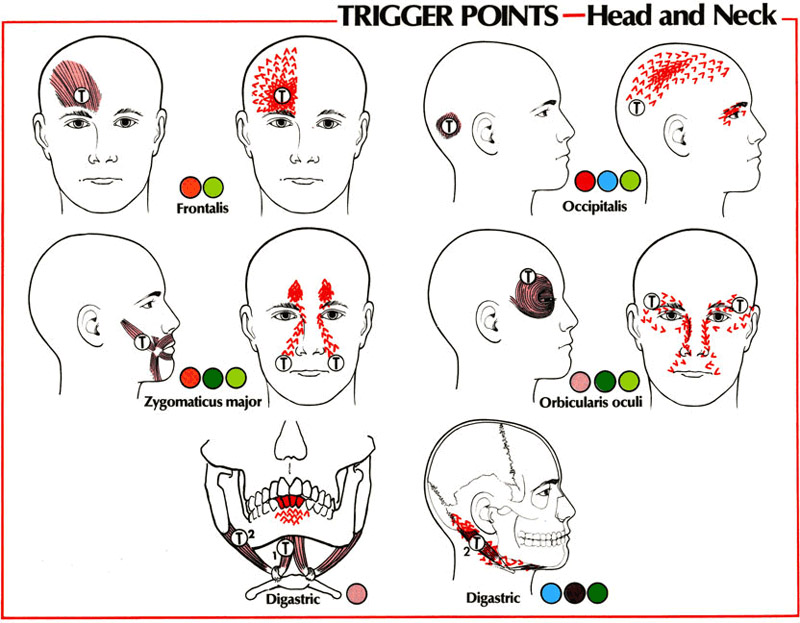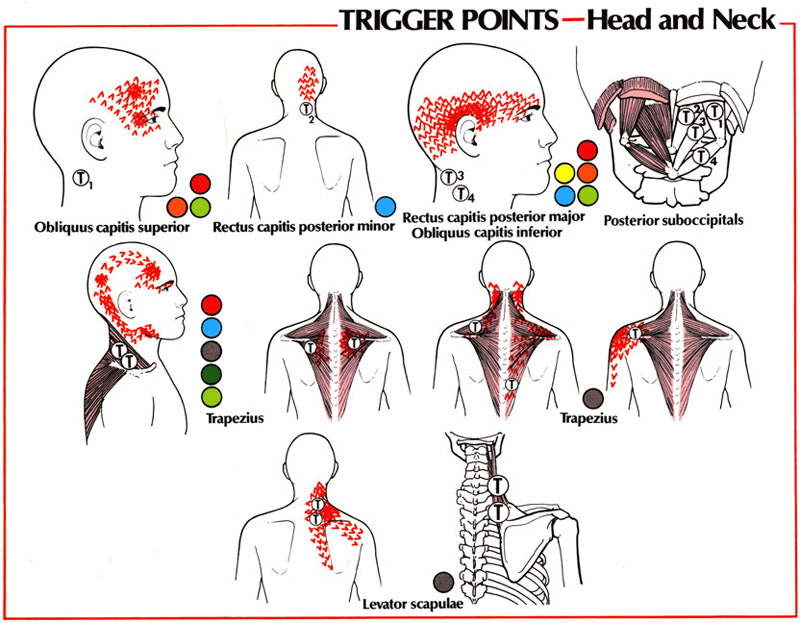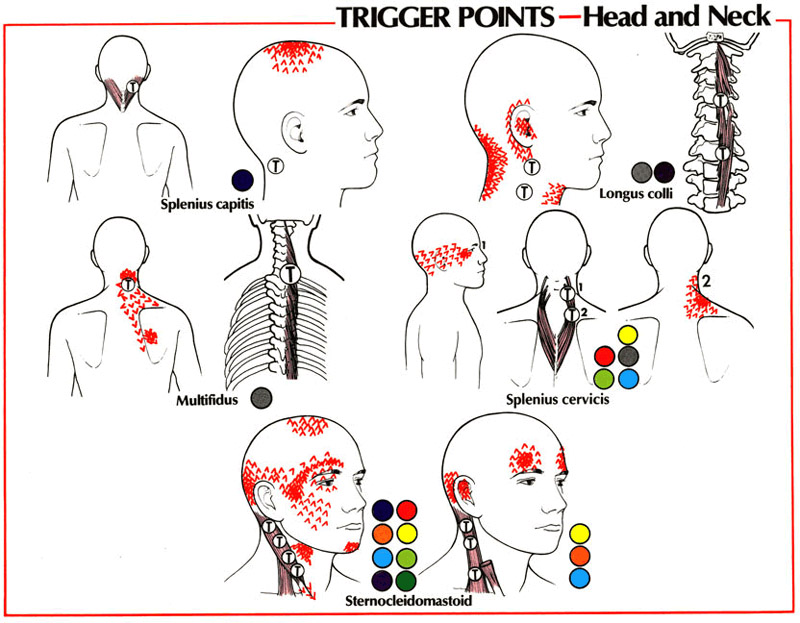
Neck pain can be triggered by a trauma (fall, car accident, whiplash), “bad habits” (sitting in front of the computer with slouched shoulders and head forward), sleeping habits (on the side or on the stomach with the head turned to one side), or holding the phone with the shoulder to the ear.
All these activities will alarm the central nervous system, and will trigger it to send “protective muscle spasm reflex” to the muscle as a defense mechanism.
Once the muscle is in a spasm and its fibers have shortened, it has lost its ability to stretch. The muscle fibers will start to compress blood vessels, compromise blood circulation, entrap nerves, and compress joints, the cervical (neck) vertebrae in this case.
These pain patterns frequently present in older patients who already have some degenerative arthritis and may have been told they will ‘have to live with it.’
The involved muscle groups are located in the back, front and side of the neck:
- The Scalene muscles which located in front, side and back of the neck have a powerful impact on neck structure and function. They can straighten the normal neck curvature, or even reverse it. The anterior and lateral scalene could compress nerves, and will produce pain and radiation (tingling sensation and numbness) to the neck, shoulder, arm down to the fingers.
- The Upper Trapezius and Levator Scapulae muscles connect the cervical vertebrae to the shoulder blades (scapulae) and upper thoracic spine. While in a spasm they will produce pain to the back of the neck, to the shoulder and headaches.
- The S.C.M. (Sternocleidomastoid) muscle is connected from the clavicle (collar bone) to the side of the neck under the ear. When in spasm, it produce headaches stiff neck, and pain to the jaws, and side of the neck.
These neck muscles respond to the position of the shoulders. When the shoulders move forward, they take the neck and head forward with them, causing the eyes to be directed downwards, towards the floor. However, because of the “righting reflex”, the head must be pulled back to level the eyes. For every inch the head is in front of the shoulders, the neck muscles are forced to work three times harder to support the head.
The position of the shoulders is determined by the position of the hips because they carry the body’s center of gravity. When the hips are pushed too far forward or backwards while sitting or standing, it will change the position of the shoulders which in turn affects the workload of the neck muscles and make them more susceptible to fatigue, leading to spasm.


